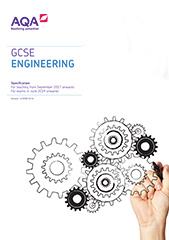3.6 Practical engineering skills
Students will be expected to draw on their knowledge and understanding of engineering to apply the following practical skills to a problem.
Subject content |
Additional information |
Mathematical understanding |
|---|---|---|
Solve problems through a logical, systematic approach. Analyse and evaluate existing solutions to problems. |
Use block diagrams and flowcharts. |
M2.4 |
Produce and work to a series of engineering drawings or schematics. |
Both mechanical and electrical/electronic, which must be drawn using current conventions such as drawings in:
|
|
Use CAD to assist in the creation of a solution. Use Computer Numerical Control (CNC)/Computer Aided Manufacture (CAM) in the manufacture of a solution. |
|
|
Test materials and their structural behaviour under load in order to ascertain suitable material(s) for a chosen component. |
||
Produce and follow a production plan taking into account: materials, processes, time and safety. |
||
Predict performance using calculations and modelling. |
Through systems modelling and data analysis. Iconic, analogue and symbolic modelling can be used. Calculations will form an important part of any symbolic modelling. |
|
Select and safely use a range of appropriate:
In order to manufacture a working solution. |
||
Select and use appropriate processes in order to manufacture a working solution. |
Examples include:
|
|
Apply quality control methods and techniques during the manufacture of the solution. |
These will be appropriate to the solution being manufactured. Methods and techniques should include:
|
M1.4 |
Design a range of tests to assess the fitness for purpose and performance of a completed product. |
Students should take into account how areas for improvement/modification could be identified and consider alternative solutions. |
